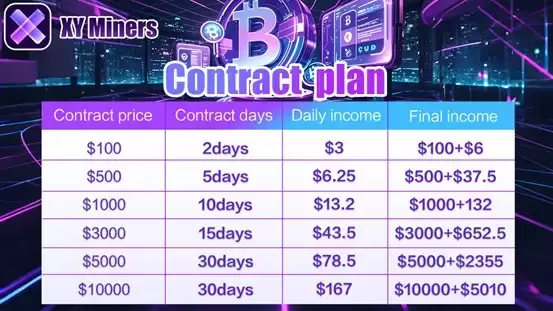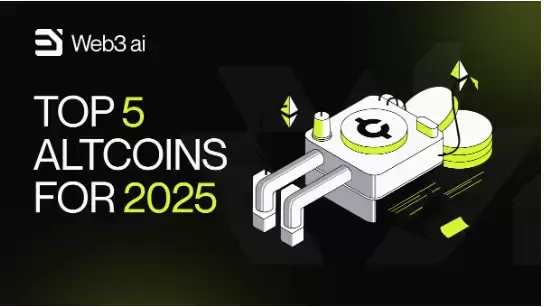 |
|
 |
|
 |
|
 |
|
 |
|
 |
|
 |
|
 |
|
 |
|
 |
|
 |
|
 |
|
 |
|
 |
|
 |
|
加密在增加交易吞吐量方面已经走了很长一段路。新的第1层(L1)和侧网提供的交易比以往任何时候都更快,更便宜。
Crypto has come a long way in boosting transaction throughput. New layer 1s (L1s) and side networks offer faster, cheaper transactions than ever before. Yet, a core challenge has come into focus: liquidity fragmentation — the scattering of capital and users across an ever-growing maze of blockchains.
加密在增加交易吞吐量方面已经走了很长一段路。新的第1层(L1)和侧网提供的交易比以往任何时候都更快,更便宜。然而,核心挑战已经成为重点:流动性分散 - 资本和用户在不断增长的区块链迷宫中的散射。
In a recent blog post, Vitalik Buterin highlighted how scaling successes have led to unforeseen coordination challenges. With so many chains and so much value splintered among them, participants face a daily tangle of bridging, swapping and wallet-switching.
Vitalik Buterin在最近的博客文章中强调了扩大成功如何导致无法预料的协调挑战。他们中间有这么多连锁和如此多的价值分裂,参与者每天都会纠缠桥梁,交换和钱包转换。
While these issues affect Ethereum, they also affect nearly every ecosystem. No matter how advanced, new blockchains risk becoming liquidity “islands” that struggle to connect with one another.
尽管这些问题影响以太坊,但它们几乎影响了每个生态系统。不管多么先进,新区块链风险成为流动性“岛屿”,这些流动性“岛屿”很难彼此建立联系。
The real costs of fragmentation
分裂的实际成本
Liquidity fragmentation means there is no single “pool” of assets for traders, investors or decentralized finance (DeFi) applications to tap into. Instead, each blockchain or side network hosts its own siloed liquidity. For a user who wants to buy a token or access a specific lending platform, this siloing introduces multiple headaches.
流动性分裂意味着交易者,投资者或分散融资(DEFI)申请没有单一的“池”资产。相反,每个区块链或侧网络都有自己的孤立流动性。对于想要购买令牌或访问特定贷款平台的用户,此孤岛引入了多个头痛。
Switching networks, opening specialized wallets and paying multiple transaction fees are far from seamless, especially for those less tech-savvy. Liquidity is also thinner in each isolated pool, leading to price disparities and higher slippage on trades.
切换网络,打开专业钱包和支付多个交易费用远非无缝,尤其是对于那些精通技术的人而言。每个孤立的池中的流动性也更薄,导致价格差距和交易的较高滑倒。
Many users resort to bridges to move capital across chains, yet these have been frequent targets for exploits, raising fear and mistrust. If it’s too cumbersome or risky to move liquidity around, DeFi fails to gain mainstream momentum.
许多用户求助于桥梁以跨链条迁移资金,但这些都是经常实现漏洞的目标,从而增加了恐惧和不信任。如果转移流动性太麻烦或冒险,Defi将无法获得主流动力。
Recently: What are exit liquidity traps — and how to detect them before it is too late
最近:什么是出口流动性陷阱 - 如何在为时已晚之前检测到它们
Buterin also notes that optimism about new, heterogeneous layer-2 (L2) solutions might be placing too little emphasis on the integration of these solutions with the broader Ethereum ecosystem. Different participants — Ethereum as a settlement layer, L2s focusing on execution, and various bridging services — have their own motivations, resulting in fragmented liquidity.
Buterin还指出,对新的,异质的第2层(L2)解决方案的乐观态度可能对这些解决方案与更广泛的以太坊生态系统的整合进行了太少的重视。不同的参与者 - 以太坊作为定居层,专注于执行的L2和各种桥接服务 - 有自己的动机,导致流动性分散。
Buterin’s observations highlight the need for more cohesive designs, like those being explored by certain layer-1 protocols and specialized frameworks. Interoperability is treated as a foundational element rather than an optional add-on. Validator nodes automatically handle crosschain connections, so new chains or side networks can launch with immediate access to the broader ecosystem’s liquidity. This reduces reliance on third-party bridges that often introduce security risks and user friction.
Buterin的观察结果强调了需要更具凝聚力设计的必要性,例如通过某些层1协议和专业框架探索的设计。互操作性被视为基础元素,而不是可选的附加组件。验证器节点会自动处理交叉链连接,因此新链或侧网络可以立即访问更广泛的生态系统的流动性。这减少了对经常引入安全风险和用户摩擦的第三方桥梁的依赖。
An integrated base-layer model brings these components together at launch, ensuring that capital can flow freely without forcing users to navigate multiple wallets, bridge solutions, or rollups. An integrated routing mechanism also consolidates asset transfers, merging the liquidity of various protocols and chains to create a unified pool in the background. By capturing a fraction of the overall liquidity flow rather than charging users for every transaction, such protocols reduce friction and encourage capital mobility across the network. Developers deploying new blockchains gain instant access to a shared liquidity base while end-users avoid juggling multiple tools or encountering unexpected fees. This emphasis on integration helps maintain a seamless experience, even as more networks come online.
一个集成的基层模型将这些组件在启动时汇集在一起,从而确保资本可以自由流动而不强迫用户导航多个钱包,桥梁解决方案或汇总。集成的路由机制还巩固了资产转移,合并了各种协议和链的流动性,以在后台创建一个统一的池。通过捕获总体流动性流量的一部分,而不是为每个交易向用户收取费用,此类协议会减少摩擦并鼓励整个网络的资本流动性。部署新区块链的开发人员可以立即访问共享的流动性基础,而最终用户避免兼顾多个工具或遇到意外费用。对集成的重视有助于保持无缝的体验,即使越来越多的网络上网。
Buterin’s post focuses on Ethereum’s rollups, but the fragmentation problem is the same regardless of which modular or heterogeneous chain a project builds on. Whether it’s an Ethereum Virtual Machine-compatible chain, a WebAssembly-based platform, or something else, the same trap occurs if liquidity is fenced off.
Buterin的帖子着重于以太坊的汇总,但是分裂问题与项目建立的模块化或异质链相同。无论是以太坊虚拟机器兼容链,一个基于WebSembly的平台,还是其他东西,如果流动性被围起来,也会发生相同的陷阱。
As more protocols explore base-layer solutions — embedding automatic interoperability and routing into their chain design — there’s hope that future networks won’t splinter capital further but instead help unify it. A clear principle emerges: throughput means little without connectivity.
随着越来越多的协议探索基础层解决方案(将自动互操作性嵌入到其链设计中),希望未来的网络不会进一步拆分资本,而是有助于统一它。明确的原理出现了:吞吐量几乎没有连接性。
Ideally, users shouldn’t need to think about L1s, L2s or sidechains. They just want seamless access to decentralized applications (DApps), games and financial services. Adoption will follow if stepping onto a new chain feels identical to operating on a familiar network.
理想情况下,用户不需要考虑L1,L2S或Sidechains。他们只想无缝访问分散应用程序(DAPP),游戏和金融服务。如果踏上新链与在熟悉的网络上操作相同,则将随后采用。
This article is for general information purposes and is not intended to be and should not be taken as legal or investment advice. The views, thoughts, and opinions expressed here are the author’s alone and do not necessarily reflect or represent the views and opinions of Cointelegraph.
本文是出于一般信息目的,不打算被视为法律或投资建议。这里表达的观点,思想和观点是作者独自一人,不一定反映或代表Cointelegraph的观点和观点。
免责声明:info@kdj.com
所提供的信息并非交易建议。根据本文提供的信息进行的任何投资,kdj.com不承担任何责任。加密货币具有高波动性,强烈建议您深入研究后,谨慎投资!
如您认为本网站上使用的内容侵犯了您的版权,请立即联系我们(info@kdj.com),我们将及时删除。
-

-

- 挂钩协议(Hook)突破可能会使价格提高到0.30美元
- 2025-04-20 05:50:13
- Hooked协议(Hook)正在加密市场引起人们的注意,最近的X帖子来自图表的世界,强调了其看涨潜力。
-

-

-

- 比特币的优势可能会崩溃到40%:对Altcoin市场有益
- 2025-04-20 05:40:17
- 加密货币市场中比特币的优势正在危险地接近长期阻力水平,这在过去触发了重大逆转。
-

- 加密货币的重点是转向提供解决实际问题的工具
- 2025-04-20 05:40:17
- ChainLink(链接)最近的升高不仅反映了市场运动,还与新推出的功能相关,可增强实际使用。
-

- 加密市场再次升温 - 这次不仅是比特币或以太坊
- 2025-04-20 05:35:12
- 加密货币市场再次振作起来,这不只是比特币或以太坊。一组强大的山寨币引发了集会
-

-





























































